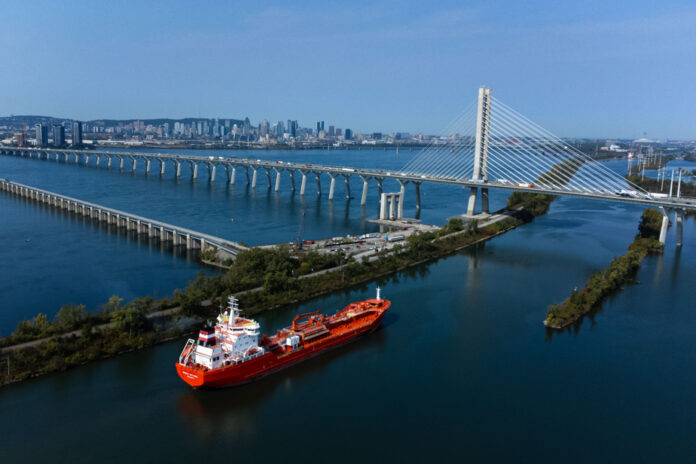(Montreal) Workers at the St. Lawrence Seaway Management Corporation (CGVMSL) are officially on strike since around midnight Sunday, after negotiations were not conclusive for a satisfactory agreement between the two parties concerned.
In a press release sent overnight from Saturday to Sunday, Unifor national president Lana Payne said she was disappointed that the employer “failed to get things moving over the last two days. »
There has been no significant progress in the last hours during discussions between the St. Lawrence Seaway Management Corporation (CGVMSL) and the Unifor union, both parties agreed on Saturday afternoon, who continued to negotiate in order to avoid the triggering of a strike at the last minute, in vain.
“This impasse is extremely regrettable, but our members remain committed to securing a fair deal,” Payne said in a statement.
According to Unifor’s Quebec director, Daniel Cloutier, the union negotiated “in good faith” until the last minute. However, he argued that there was no question “of workers’ rights being compromised. »
Mr. Cloutier indicated that the union remained open to discussion and that he hoped the employer would reconsider its position.
Union members working at the Seaway voted 99% in favor of a strike mandate and gave their employer 72 hours’ notice earlier this week. The walkout was therefore called at 12:01 a.m. Sunday.
These 361 union members work in the maintenance, supervision, engineering service and various navigation operations of the Seaway, which extends from the Jacques-Cartier Bridge in Montreal to Niagara, Ontario, via the locks.
Both parties have already made it known that in the event of a strike, all navigation on this axis would be interrupted. About 4,000 ships pass through the Seaway each year, including cargoes of grain, totaling $16.7 billion worth of goods last year.
According to the management side, the union is demanding salary increases modeled on negotiations in the automobile industry. However, she argues that the situation is different at the Seaway, where wages do not lag behind inflation, as is the case among auto manufacturers, in her opinion.
“Despite recent increases in inflation, Seaway workers have negotiated wages well above inflation over the past 20 years and today find themselves nearly 10% ahead of inflation », Supported the St. Lawrence Seaway Management Corporation in a press release.
The Quebec director of Unifor, Daniel Cloutier, replied that “the demands were submitted to the employer well before we knew the outcome of the negotiations in the automobile sector. The process has been underway for a while,” he argued.
“It’s a futile debate. Should we understand that because there are workers who would have made earnings higher than inflation in the last 10 or 15 years, in some of those years they would have to lose today? today while we are experiencing an inflation crisis? »
“We remain committed to continuing discussions and reaching a fair labor agreement,” said Terence Bowles, President and CEO of the SLSMC.
Talks began on June 19 and 20 with the help of a conciliator. The two sides held additional meetings in September and resumed negotiations on October 17.
Negotiations then resumed on Saturday afternoon and continued into the evening. When speaking with The Canadian Press, Mr. Cloutier mentioned that the two parties were still “1000 nautical miles” apart when it came to salaries.
The SLSMC is now awaiting a response to its request from the Canada Industrial Relations Board, which seeks a ruling under the Canada Labor Code for the union to provide employees during the strike to ensure that ships participating in the transport grain continues to pass through the system.
An orderly network shutdown took place during the 72-hour notice period, allowing vessels to safely exit the Seaway network, the employer noted. Currently, there are no vessels waiting to exit the network, the Corporation said, but “there are more than 100 vessels outside the network that are affected by the situation.
“During this time of economic and geopolitical crisis, it is important that the Seaway remains a reliable transportation route for the efficient movement of essential cargo between North America and the rest of the world,” said Terence Bowles, President and CEO. CEO of the CGVMSL.















